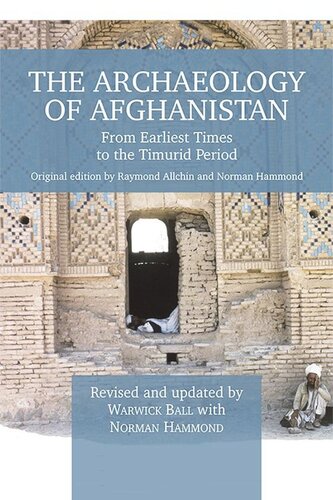

Most ebook files are in PDF format, so you can easily read them using various software such as Foxit Reader or directly on the Google Chrome browser.
Some ebook files are released by publishers in other formats such as .awz, .mobi, .epub, .fb2, etc. You may need to install specific software to read these formats on mobile/PC, such as Calibre.
Please read the tutorial at this link: https://ebookbell.com/faq
We offer FREE conversion to the popular formats you request; however, this may take some time. Therefore, right after payment, please email us, and we will try to provide the service as quickly as possible.
For some exceptional file formats or broken links (if any), please refrain from opening any disputes. Instead, email us first, and we will try to assist within a maximum of 6 hours.
EbookBell Team

4.7
56 reviewsAfghanistan is at the cultural crossroads of Asia, where the great civilisations of Mesopotamia and Iran, South Asia and Central Asia overlapped and sometimes conflicted. Its landscape embraces environments from the high mountains of the Hindu Kush to the Oxus basin and the great deserts of Sistan; trade routes from China to the Mediterranean, and from Central Asia to the Arabian Sea cross the country. It has seen the development of early agriculture, the spread of Bronze Age civilisation of Central Asia, the conquests of the Persians and of Alexander of Macedon, the spread of Buddhism and then Islam, and the empires of the Kushans, Ghaznavids, Ghurids and Timurids centred there, with ramifications across southern Asia. All of which has resulted in some of the most important, diverse and spectacular historical remains in Asia.
First published in 1978, this was the first book in English to provide a complete survey of the immensely rich archaeological remains of Afghanistan. The contributors, all acknowledged scholars in their field, have worked in the country, on projects ranging from prehistoric surveys to the study of Islamic architecture. It has now been thoroughly revised and brought up to date to incorporate the latest discoveries and research.
Original edition edited by Raymond Allchin and Norman Hammond
Revised and updated edition edited by Warwick Ball with Norman Hammond